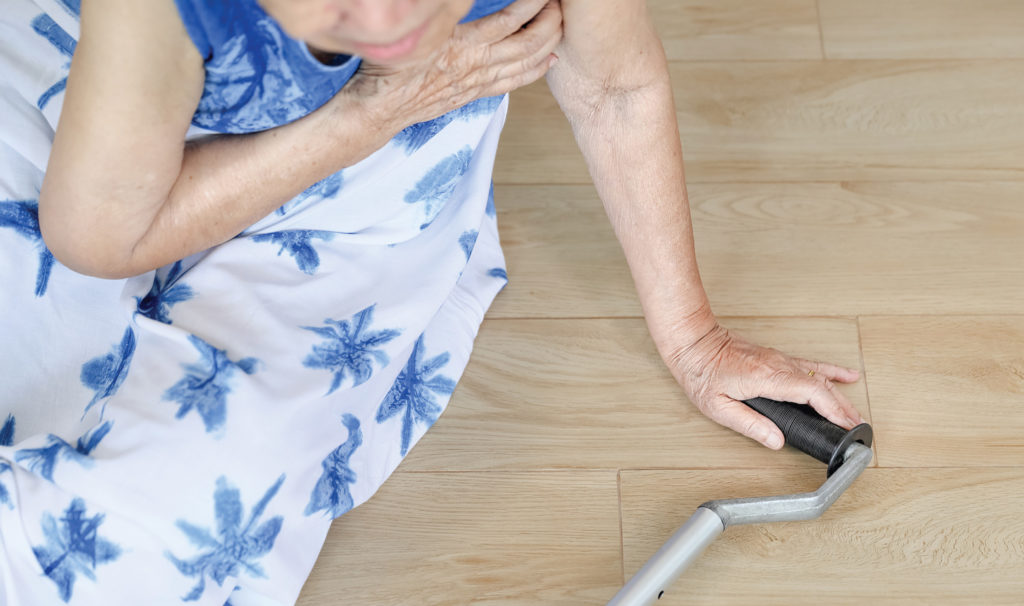 Statistically, up to a third of people above the age of 65 have at least one fall annually. Fall and falls-related injuries result in significant morbidity and mortality in patients.
Statistically, up to a third of people above the age of 65 have at least one fall annually. Fall and falls-related injuries result in significant morbidity and mortality in patients.
In Australia, studies have shown that falls in the elderly is one of the commonest reasons for hospitalisation. Epidemiological data shows that falls account for up to 11% of community injury deaths.

The adverse outcomes following a fall impose a significant cost to the health care system and contribute heavily to the overall burden of disease. The consequences of a fall vary in severity, from minor soft tissue bruising to catastrophic outcomes such as intracranial haemorrhage, fractures and death. Patients with falls suffer from lower functional outcomes, reduced confidence in their balance and increased level of anxiety.
Common causes
One study showed that a “fall in the past 12 months” is the strongest single predictor of future falls. Polypharmacy increases the risk and frequency of falls, particularly drugs of the benzodiazepine and anti-depressant class. Psychotropic medications not only increase the risk of falling but is associated with more injurious falls and falls-related mortality.
These effects are augmented, particularly in the elderly due to increased CNS vulnerability and sensitivity to sedative effects. Anti-hypertensive related falls are not necessarily due to hypotension alone, but also the effects of dizziness, syncopal events and postural hypotension.
Osteo-sarcopenia or frailty is an “age-related decline in skeletal muscle mass” and motor strength. The effects of age-related frailty lead to decreased strength, lower agility and slower motor reaction time. Functionally, this translates to a higher frequency of falls with ageing.
Screening for these risk factors is vital in community practice. Tools that can be used are the Falls Risk Assessment and Management Plan (FRAMP), Falls Risk Assessment Tool (FRAT) and Hendrich Fall Risk Model.
Various guidelines have been produced by the RACGP education series and the WA Department of Health to screen, assess and provide interventions to prevent falls in the community. In addition to a detailed medical history and clinical examination, a multidisciplinary approach involving allied health professionals will form a holistic model in the prevention of falls in the elderly.
Strategies to prevent and manage falls are medication review, rationalising and drug deprescribing, osteoporosis prevention, physiotherapy review (falls risk assessment, motor strengthening, balance training and gait retraining), occupational therapy review (functional assessment, mobility aids and customised equipment), dietician review (nutritional optimisation, including vitamin D supplementation), podiatry review (appropriate footwear, orthotics and specialised splinting), vision assessment and correction, continence assessment (i.e. continence nurse advisor), home safety assessment (hazard reduction +/- home modifications) and patient, family and caregiver education.
There are many risk factors associated with falls, some are preventable and some from irreversible factors. As such, early identification of the risk factors is essential in the community to prevent hospital re-admissions and to improve overall quality of life.
References available on request.
Questions? Contact the editor.
Disclaimer: Please note, this website is not a substitute for independent professional advice. Nothing contained in this website is intended to be used as medical advice and it is not intended to be used to diagnose, treat, cure or prevent any disease, nor should it be used for therapeutic purposes or as a substitute for your own health professional’s advice. Opinions expressed at this website do not necessarily reflect those of Medical Forum magazine. Medical Forum makes no warranties about any of the content of this website, nor any representations or undertakings about any content of any other website referred to, or accessible, through this website.

